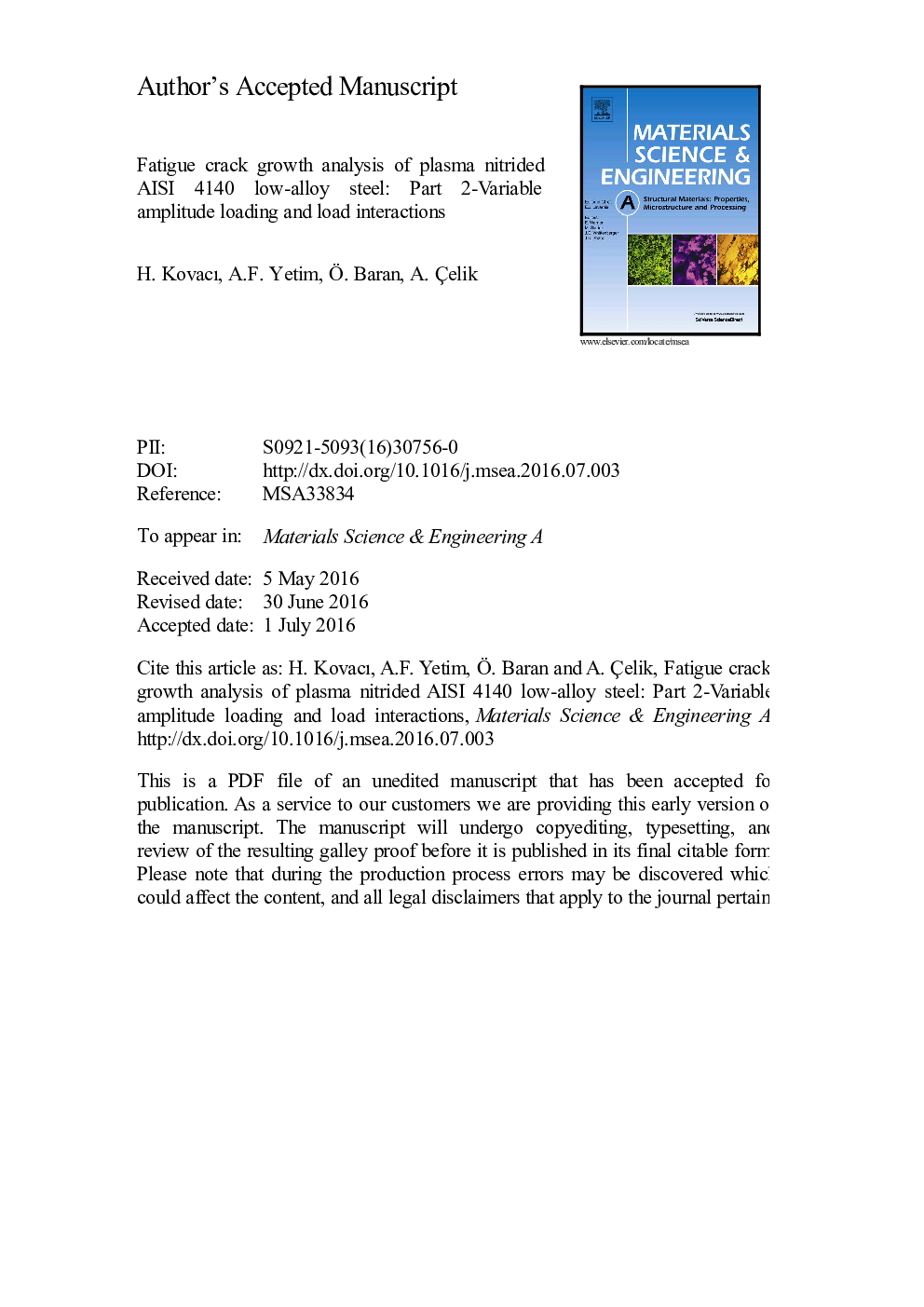| Article ID | Journal | Published Year | Pages | File Type |
|---|---|---|---|---|
| 7975307 | Materials Science and Engineering: A | 2016 | 39 Pages |
Abstract
The effects of plasma nitriding on fatigue crack growth (FCG) properties of AISI 4140 low-alloy steel under variable amplitude loading (VAL) conditions were investigated. The compact tension specimens made of AISI 4140 were plasma nitrided at 400 °C, 500 °C and 600 °C for 1 and 4 h. CT specimens were subjected to fatigue under different VAL conditions including overload (OL), underload (UL), overload+underload (OL+UL) and underload+overload (UL+OL). The OL investigations revealed that the FCG life of untreated and plasma nitrided samples increased with respect to constant amplitude loading (CAL). Plasma nitrided samples exhibited less FCG life increase than untreated sample because of decreased crack tip plastic zone size and crack retardation period. In the case of UL, FCG lives of all samples decreased in comparison to CAL. The effect of tensile residual stresses formed after UL was suppressed by the compressive residual stresses produced by plasma nitriding. Also, it was seen that the increasing compound layer thickness and the presence of Braunite phase increased the brittleness of the material regardless of the loading type. The overall results showed that the loding type and mechanical/structural characteristics of nitride layers significantly affected the FCG behavior of the material.
Related Topics
Physical Sciences and Engineering
Materials Science
Materials Science (General)
Authors
H. Kovacı, A.F. Yetim, Ã. Baran, A. Ãelik,
